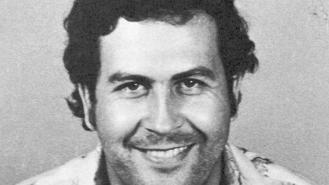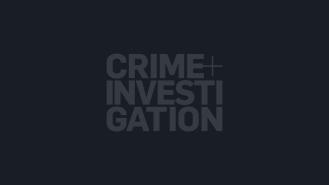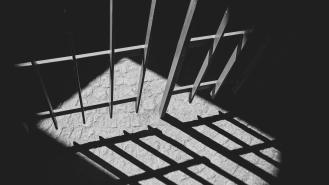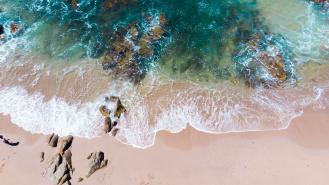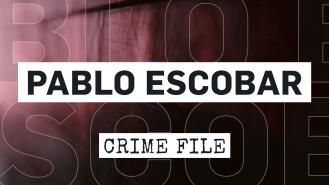
El Padrino (The Godfather)
Born Pablo Emilio Escobar Gaviria in Medellin, Colombia, to middle-class parents. His elder brother, Roberto, reported him as a good brother, who was kind, friendly and intelligent and someone who would achieve greatness. Young Pablo Escobar was driven and dreamed of becoming the president of Colombia. His drive unfortunately began to find the wrong outlets and he was soon involved in small-time hustling with his gang on the streets of Medellin.
There exist unfounded rumours that, whilst still at school, Escobar would steal tombstones from the local graveyards, sandblast off the names and sell them to Panamanian smugglers. He did not drink much besides beer and did not smoke cigarettes, although he developed a liking for the strong Colombian cannabis, a habit he indulged until his death. Doing whatever he could to make money, by the age of 20, Escobar was dealing cannabis, skilled at stealing cars and starting to build a name for himself in the Colombian criminal underworld.
Cocaine Trade
It was in the early 1970s that he entered the cocaine trade and began buying high-grade coca paste from Bolivia and Peru. He processed it into cocaine, which he transported to America for distribution. Escobar’s drug business began to grow and, requiring a greater workforce, he decided to collaborate with other criminal groups in the area and form the Medellin Cartel. When the well-known Medellin drug dealer, Fabio Restrepo, was murdered in 1975, Escobar became head of the Medellin Cartel and his brother, Roberto, handled the accounts. It was believed that Escobar had arranged for Restrepo’s murder for this very end.
Escobar seemed to have a preference for young girls and at age 26 he fell in love with a 15-year-old, Maria Victoria Henao Vellejo. In order to marry in 1976, they had to seek approval from the local bishop. The couple had two children, Juan Pablo and Manuela. Whilst they remained married until Escobar’s demise, he was known to have constant affairs, most frequently with underage girls. He always did exactly as he pleased and would, more often than not, kill anyone who dared oppose him. In this way, Escobar’s power grew and he was associated with many kidnaps and assassinations over the years.
He also had an affable side and due to his growing wealth and influence, enjoyed a certain amount of public popularity and political standing. In 1982 Escobar was elected as a deputy representative to the Chamber of Representatives of Colombia’s Congress, as part of the Colombian Liberal Party. He went on to sponsor various charities and football clubs in the Medellin area.
Robin Hood
Referred to by his brother, Roberto, as a modern day Robin Hood, Escobar often paid for low-cost housing and other community necessities for the poor people of his neighbourhood. It was apparently a meticulously built image that Escobar promoted in his own newspaper and which ensured his protection by many Medellin citizens.
Escobar built his drug trafficking industry to such an extent that he eventually controlled over 80% of the cocaine sent to America. With his own factories and an entire fleet of aeroplanes and ships, including two radio-controlled submarines, it has been estimated that Escobar smuggled 70 to 80 tonnes of cocaine from Colombia to America per month, and as much as 11 tonnes in each flight. In order to launder the drug money, the Medellin Cartel controlled a large amount of crooked white-collar workers, such as bankers, lawyers and extended family.
Extradition
It was in the autumn of 1985 when the United States really increased their pressure on Colombia to extradite Escobar. There was growing public suspicion as to the origins of his enormous wealth and American authorities felt duty-bound to investigate further. In his usual manner, Escobar tried to sway the Colombian authorities towards a no extradition clause and to grant amnesty to drug barons in exchange for giving up the drug trade. He mounted a terror campaign, with further killings, including innocent citizens. This served to turn public opinion against him and resulted in a breakdown in the alliance of Colombian drug traffickers.
In 1989, Escobar was listed as the seventh richest man in the world by Forbes magazine, with a fortune rumoured to be around $24 billion. He certainly loved to display his wealth and lived an extravagant lifestyle. He invested much of his money in real estate, splashing out on luxurious homes, many with private helicopter ports. He owned numerous cars, helicopters and aeroplanes, a private zoo for which he imported exotic wild animals, and a massive garden filled with hundreds of fruit trees. He also owned apartments, banks and large tracts of land. For his own protection, Escobar bought the support of other criminals, who also acted as his guerrilla army, carrying out any violence he demanded.
As time went on, Escobar developed a more leisurely way of making money from cocaine trafficking. Firstly, he claimed to be solely responsible for both the setting up and the huge success of the Colombian cocaine trade. Secondly, he cited his involvement in the battle for the nullification of the 1979 American-Colombian Extradition Treaty. For these reasons, he imposed a tax on other drug dealers in his area, forcing them to pay him a percentage of their profits.
Timeline
1st December 1949: Born
May 1976: Arrested drug possession (charges dropped)
18th November 1986: Arrested, drug smuggling and racketeering (indicted)
1991: Sentenced, handed himself in to Colombian government in exchange for no extradition to the United States.
22nd July 1992: Escape from prison
2nd December 1993: Died
The Trial
Escobar was never put on trial.
The Aftermath
Closing in on the Don
By the early 1990s, pressure on Escobar was mounting and in 1991, he approached the Colombian government to make a deal. In exchange for their guarantee of no extradition to the US, he would willingly hand himself in, stop all drug trafficking and be jailed for a five-year period. The government accepted the deal, on Escobar’s terms, which included being permitted to build his own ‘jail’, named La Catedral, which resembled more a luxury hotel than a prison.It was a safe place to hide from potential assassins and he was regaled with an endless supply of five-star food, drugs, alcohol, prostitutes and visitors. It is alleged that he was occasionally allowed out to attend football matches and parties. Whilst in confinement, Escobar was not only living a standard of life to which he was accustomed, he even continued to run his cocaine empire, albeit telephonically.
Escape
Due to growing public pressure, Colombian officials made plans to move Escobar to a regular prison. On 22nd July 1992, after a year of living at La Catedral, Escobar made his escape whilst being transferred and went on the run. The United States finally felt authorised to participate in the manhunt, which they helped direct and finance.
On 26th July 1992, American Delta Force operatives joined the Medellin Search Bloc. It was a joint team of Colombian police and army, headed by police Colonel Hugo Martinez, and backed by agents from the US Drug Enforcement Administration, the CIA and later the Navy SEALS. Escobar remained a fugitive for 16 months, during which time an extraordinary number of people were murdered. He reportedly paid his hit men for each Search Bloc member they killed and over 600 police agents died during the manhunt.
In early 1993, a vigilante group formed, calling themselves Los Pepes (People Persecuted by Pablo Escobar), with the express purpose of violent revenge for all he had done. Los Pepes was given financial backing by the Cali Cartel and its numbers grew as more of Escobar’s enemies joined.Attacking Escobar’s dynasty from all angles, Los Pepes bombed his properties and targeted his source of money laundering by killing the white-collar infrastructure of the Medellin Cartel, which included Escobar’s own extended family members. There was speculation that some Search Bloc members were helping Los Pepes in their endeavours.
In February 1993, Escobar’s wife and children applied to the US Embassy in Bogota for visas to enter America but they were refused, under orders from President Cesar Gaviria. Colombia’s top federal prosecutor, General Gustavo de Greiff, disagreed with this decision and, calling himself an independent entity, entered into negotiations to help them leave Colombia in return for Escobar’s surrender. On the night of Friday, 26th November 1993, the US Embassy in Bogota received information that Escobar’s wife and children were once more planning to flee Colombia. They were successful this time and landed in Frankfurt, Germany on Sunday 28th November 1993. The Lufthansa aeroplane was forced to taxi to a remote part of an alternate runway, in order to avoid the press awaiting their arrival at the terminal. It wasn’t long after this that authorities traced a telephone call made by Escobar, which enabled them to track him to a house in Medellin
Fatal shot
On Thursday, 2nd December 1993, a day after his 44th birthday and after a manhunt that lasted 16 months, Escobar was finally found and cornered in one of his hideouts in Los Olivos. He and his bodyguards attempted to escape via the rooftops and were engaged in a protracted gunfight with Search Bloc authorities. Escobar was wounded in the leg and torso before receiving a fatal shot to the head. There has been speculation as to who fired the fatal bullet and the possibility put forward that it might have been a planned execution.
Colombia certainly did not rid itself of the scourge of its cocaine trade with the death of Escobar but it was successful in destroying the powerful Medellin Cartel. The Cali Cartel took its place until the mid 1990s, when the Colombian government either caught or killed its leaders.
Escobar’s infamy lives on and he is the subject of books, films and television documentaries. In 2006, a Truth Commission, instigated by three judges of the Colombian Supreme Court, included in its report claims that Escobar had been behind the 1985 M-19 siege of the Supreme Court. One of these claims was from ‘Popeye’, a former Escobar hit man.
On 28th October 2006, Escobar’s body was exhumed at the request of his nephew, Nicolas Escobar. It was in order to verify that it was Escobar’s body in the tomb and also to collect DNA for a paternity test claim.
The Arrest
Upon their return from a drug run to Ecuador in May 1976, Escobar and a number of his men were arrested on charges of drug possession: cocaine.
Initially Escobar tried to bribe the judge to drop the charges but this had no effect. His lawyers then entered into several months of legal argument, to no avail. Escobar put an end to the matter by having two of the arresting officers killed and the case was duly dropped.
On 18th November 1986, Escobar was once more arrested on charges of drug smuggling and racketeering, and once more through use of terror, the charges were dropped. As this became Escobar’s standard way of obliterating any opposition, he was never arrested again.
The Crimes
Coque de Mi Rey
The extent of Escobar’s crimes will never be fully known or verified. However, vast numbers of people were killed on his command. His particular way of handling any authorities questioning his actions was to bribe them or to kill them, or ‘plata o plomo’, Colombian slang for ‘money or bullets’.
Escobar was believed to have had Medellin drug lord Fabio Restrepo murdered in 1975, in order to take over full leadership of the Medellin Cartel. A decade later, in 1985, the Colombian Supreme Court was studying the constitutionality of Colombia’s extradition treaty with the United States. It was besieged by left-wing Colombian guerrillas from the 19th of April Movement (M-19) and half the court’s judges were murdered. Escobar was thought to have been responsible for this action but this was never proven.
Assassination Attempt
The 1989 bombing of a Bogota security building was attributed to Escobar. A number of American intelligence reports claimed that Escobar‘s cartel was planning to kill President Bush Sr. with a bomb on his visit to Cartegena in 1989, which did not transpire.
In the early 1990s, Escobar reportedly had Luis Carlos Galan and two other Liberal Party candidates for Colombian president assassinated, as they posed a threat to everything Escobar upheld. A few months later, Escobar had a bomb planted on an aeroplane on which presidential candidate Csar Gaviria was travelling. Avianca Flight 203 was blown out of the sky, killing 110 people.
Escobar apparently caught one of his servants stealing some silverware and the man’s punishment was to be tied up before being thrown into the swimming pool whilst everyone present watched him drown. Throughout its existence, the Medellin Cartel fought its main rival, the Cartel de Cali, with unrelenting death on both sides. It was claimed that the Moncada brothers, business associates of Escobar, were murdered whilst visiting Escobar in his prison, La Catedral.
Included in the list of those killed by Escobar’s influence are many ordinary citizens, scores of journalists, over 1,000 police officers, more than 200 judges, an attorney general and a justice minister.
